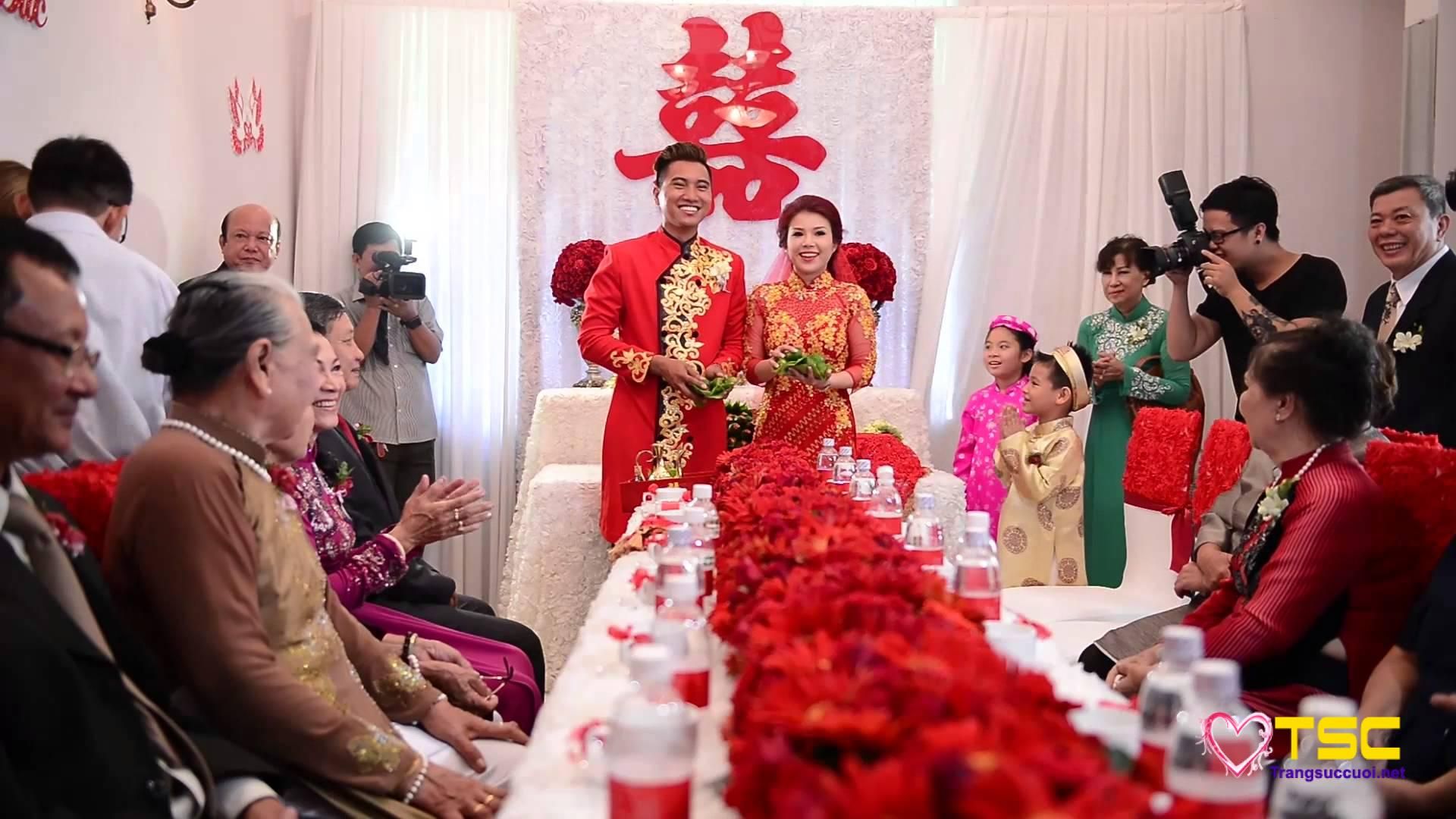Weddings are not just a union of two individuals; they are a celebration of culture,
tradition, and love. When it comes to wedding rituals, Chinese-Vietnamese
weddings stand out as a harmonious blend of two distinct cultures. Let’s explore
the traditional customs that grace Chinese-Vietnamese wedding ceremonies,
uniting families and forging a path for the future.
Betrothal Gifts Ceremony: Tea Ceremonies Unveiled
The Chinese tradition of exchanging betrothal gifts takes center stage in the pre-
wedding festivities. Known as “Guo Da Li“, this ceremony involves the groom’s
family presenting gifts, including jewelry, fruits, and other symbolic items, to the
bride’s family. You can think of it like a modern-day dowry gesture. The exchange
symbolizes the groom’s sincerity and commitment to the union. Following this, a
series of tea ceremonies unfold, where the couple pays respect to their elders by
offering them a cup of tea. Typically, the couple are on their knees presenting the
tea not just the parents, but perhaps uncles, aunts, and grandparents as well. It
is a gesture that signifies gratitude, respect, and the integration of the couple into
each other’s families.
Red is the Color of Love: Traditional Attire
The vibrant hues of red and gold dominate Chinese-Vietnamese weddings,
representing luck, prosperity, and happiness. It’s almost like Chinese New Year
or Tet! The bride typically wears a stunning red ao dai, a traditional Vietnamese
gown, while the groom opts for a red qipao or a changshan, reflecting Chinese
heritage. Sometimes, these traditional outfits have certain mythical animal
embroidery on the fabric. Phoenixes represent the royalty of a queen, which is
fitting for a bride, and dragons signify the strength of a king, much like that of the
groom’s.
Gate-Crashing Games: A Playful Start to Marriage
To add a touch of humor and camaraderie to the wedding day, Chinese-
Vietnamese couples often participate in gate-crashing games. Before the groom
is allowed to enter the bride’s home, he and his groomsmen must complete a
series of entertaining challenges set by the bridesmaids. These light-hearted
games not only create joyful memories but also symbolize the groom’s
willingness to go the extra mile for his beloved. These make great photographic
moments that you can look back on and laugh.
Double Happiness: Symbolic Décor and Accessories
Double happiness, or “shuang xi,” is a ubiquitous symbol in Chinese culture,
denoting joy and unity. This symbol is prominently featured in wedding décor,
invitations, and even on the couple’s attire. The repetition of the character for
happiness is believed to double the blessings and good fortune bestowed upon
the newlyweds, creating an auspicious atmosphere for their union.
Unity Bowl Ritual: Blending Traditions in Matrimony
The unity bowl ceremony is a beautiful incorporation of both Chinese and
Vietnamese elements. The couple, standing side by side, pours different colored
grains into a single bowl, symbolizing the coming together of their individual lives
into a shared journey. This ritual eloquently captures the essence of unity and
collaboration within the marriage. This custom is not strictly Asian in its roots; we
also see a similar ritual in American or Western ceremonies where the groom
and bride pour different color sands into one vase.
A Chinese-Vietnamese wedding is a testament to the richness of cultural
diversity and the beauty that unfolds when traditions intertwine. From the
exchange of betrothal gifts to the playful gate-crashing games and the symbolic
unity bowl ceremony, each ritual is a brushstroke in the masterpiece of a lifelong
commitment. In celebrating the union of two souls, Chinese-Vietnamese
weddings offer a captivating glimpse into the enduring strength of love that
transcends borders and cultural differences.
